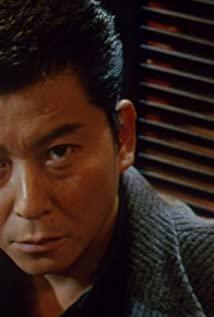To write the movie "Eel", one has to talk about the Great Depression of the Japanese economy in the late 1980s. At this stage, the Japanese film industry was also severely hit, and directors like Imamura Shohei had to face it. Reality, the helplessness of accepting Xiying. It was not until the 1990s, that is, in 1997, that Masahira Imamura appeared in people's eyes with his new work "Eel". This movie focuses on women's salvation of men. Compared with the previous movies of Imamura Shohei, the movie "Eel" is more forbearing and more kind. In Imamura Shohei's movies, many characters are from the civilian class. These low-level people wander around and linger on the fringe of society. Both their identity and character carry a confusing mystery. Perhaps this is the most real and natural thing in human nature.
When watching Masahira Imamura's movies, I often wonder how strong a director must be in order to face naked humanity. You know, looking at human nature is a kind of pain, and not everyone can bear this kind of pain. Shohei Imamura expresses the different attributes between humans and animals in a purer way, blurring the boundaries between humanity and animality, allowing the simplest and most conspicuous aspects of life to be presented to us at the same time. In front of us, the beauty and ugliness, kindness and sin, kindness and cruelty, persistence and abandonment that we have seen through Imamura Shohei’s movies... These are nothing to do with morality, but pure behavior, for the sake of redemption. Foreshadowing laid in advance.
In the movie "Eel", Takuro Yamashita, played by Yakusho Koji, is a murderer who was released on bail. Such a character is always avoided in the usual morals and emotions. He killed people, so he was a bad guy. However, in this movie, his good and his bad are not important anymore. His portrayal of Yamamoto is expressed in a way that is infinitely close to reality, which makes people feel a little moved by such a murderer. Yamamoto became a bad guy because of the word "sex." In this film, sexual desire is a hidden existence,
even a little distorted, this distortion is not abrupt, but more truly reveals the unknown side of human nature.
If the eel is placed in nature, the eel is a very special creature, but in the movie, the eel is a symbol of darkness. Yamamoto keeps eels in small, damp fish tanks, which can be regarded as a kind of imprisonment of desire. Yamamoto killed his wife because of a strange anonymous letter. However, subconsciously, the existence of that letter was questioned. The film uses surreal expressions in many places. This way of expression presents the character’s psychology in front of us from a special perspective. When watching this film, we can feel the character from this shooting technique. Inner struggle and suffering. After Yamamoto killed his wife, he went to report the crime very calmly and willingly accepted the imprisonment. Finally, Yamamoto put the eel back into the river, and used this release to express the dual liberation of desire and soul.
After Masahei Imamura, it seems that there has never been such a maverick movie again, and no filmmakers are willing to explore desires. In many cases, movies can be described in high-sounding words like "humanity", but why is there such a thing? "Humanity" exists, but few people are thinking. In Imamura's film, we see a dark world. However, when the film gradually ends, we can understand ourselves more clearly and treat those fleeting evils more rationally.
View more about The Eel reviews











